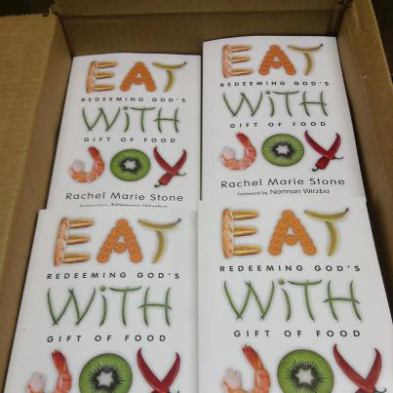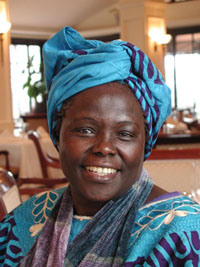You won’t hear about it in the news because it isn’t news. It’s just what’s normal here.
Every day, or nearly so, the clanging sound of metal hitting metal lets me know that someone’s at the gate that surrounds our home, bringing vegetables or fish or charcoal or wooden carvings to sell. It happens often enough that the sound elicits annoyance from me as I leave the stove, or my book, or the couch to answer the call. And often enough, the people are so desperate to sell that if I say “not today,” they’ll plead with me, lowering the price with every word. But occasionally—at least once a week—someone comes to the gate with nothing to sell, nothing to offer at any price. They’re coming, very simply, to beg for food.
It’s summer here in the southern hemisphere, and corn is growing in every spare bit of earth in which it can possibly be grown, with pumpkin and squash vines bearing their orbed fruit between the rows. The corn will be allowed to dry on the husk before being harvested, after which women in villages will pound it to a fine flour that they’ll cook into nsima (nn-SEE-ma) the thick, polenta-like dish that forms the staple of people’s diets. Pumpkins—and their edible greens—along with okra, beans, and tomatoes will become stews to give the bland, starchy dough some flavor. It’s tastier than it sounds, and it fills you up.
But in these months—in February and March, as people are waiting for the harvest—their stored corn begins to run out, and they enter the ‘hungry months.’ What corn remains is rationed carefully, and two daily meals become one small meal, or none at all. As I walk and drive along the streets, I can see people using canes of bamboo to coax guava or papaya or avocado out of tall trees. When people pass me in the street, they often chew sugar cane before spitting them out, slowly and carefully extracting whatever sweetness might remain in the fibrous bits of plant. People walk slowly. Women in labor hardly have the strength to bring forth babies. These are the hungry months.
Despite this, corn—maize, they call it—is regarded with nothing less than reverence. “Nsima is our food,” James, our gardener, tells me. “If you don’t have nsima, you don’t have life.” Nsima—and foods like it—are to much of the world today what bread was to the ancient Near East when Jesus ministered there. “I am the bread of life” was meaningful in that context in a way that’s difficult for us to grasp. For most of us, bread is just one of many choices, and we may forgo it altogether if we’re going low-carb or gluten-free or Paleo. For them—for many people in the world—no bread, no rice, no nsima—means hunger. It means weakness. It means lifelessness. Eventually, it means death.
Every day, or nearly so, women and men look in mirrors and step on scales, count calories and worry about body fat and about their appearance. It happens enough that children as young as four begin to develop anxiety over food, or express fears of being seen in a bathing suit. Even eating healthfully can become an unhealthy obsession. And often enough, people become so desperate to get control over their eating as to spend huge amounts of money on drugs, diet plans, and surgery. Occasionally, the burden of eating; of bodily existence itself, is too much to bear, and people lose their lives to anorexia—the deadliest of all mental illnesses.
But even with the superstores filled full in season and out of season with food of all kinds in every space where food can possibly be so, many of us still struggle to extract whatever goodness might remain in God’s gift of food. We ration carefully so as not to overindulge, or we use food to comfort ourselves when we are feeling lonely or anxious. We eat thoughtlessly and on the run. In this land of plenty, we remain hungry, disconnected, unsatisfied. Those at the gates—people who are poor in America—are more likely to suffer diseases associated with poor diets because the ‘plenty’ doesn’t extend into the food deserts.
Despite all this—despite the tens of thousands of children who die each day because they don’t have enough food, despite the mothers who die giving birth because their bodies have never been nourished properly, despite those who suffer bitterly from the various ills associated with greed and overabundance—I believe we can, and should—“eat with joy.” It’s a phrase that comes from Ecclesiastes, a book that reflects, and is reflected in, a good many people’s experiences of life “under the sun.” We look for justice, and find injustice; time and chance sometimes trump hard work and intelligence. Still, urges the Preacher, even in this messy, confusing world, with hunger and poverty and injustice always with us, we should, as we are able, enjoy the good things of this life with an enjoyment tempered by the knowledge that life is fleeting, and that we have obligations to God and to one another.
And so when the sound of metal hitting metal pulls me away from my computer once again, I fill a bag with cornmeal and give it away with a smile, because that’s what I can do right where I am. But wherever you are—whether among people hurting from plenty, or hurting from want—you can do something, too.









